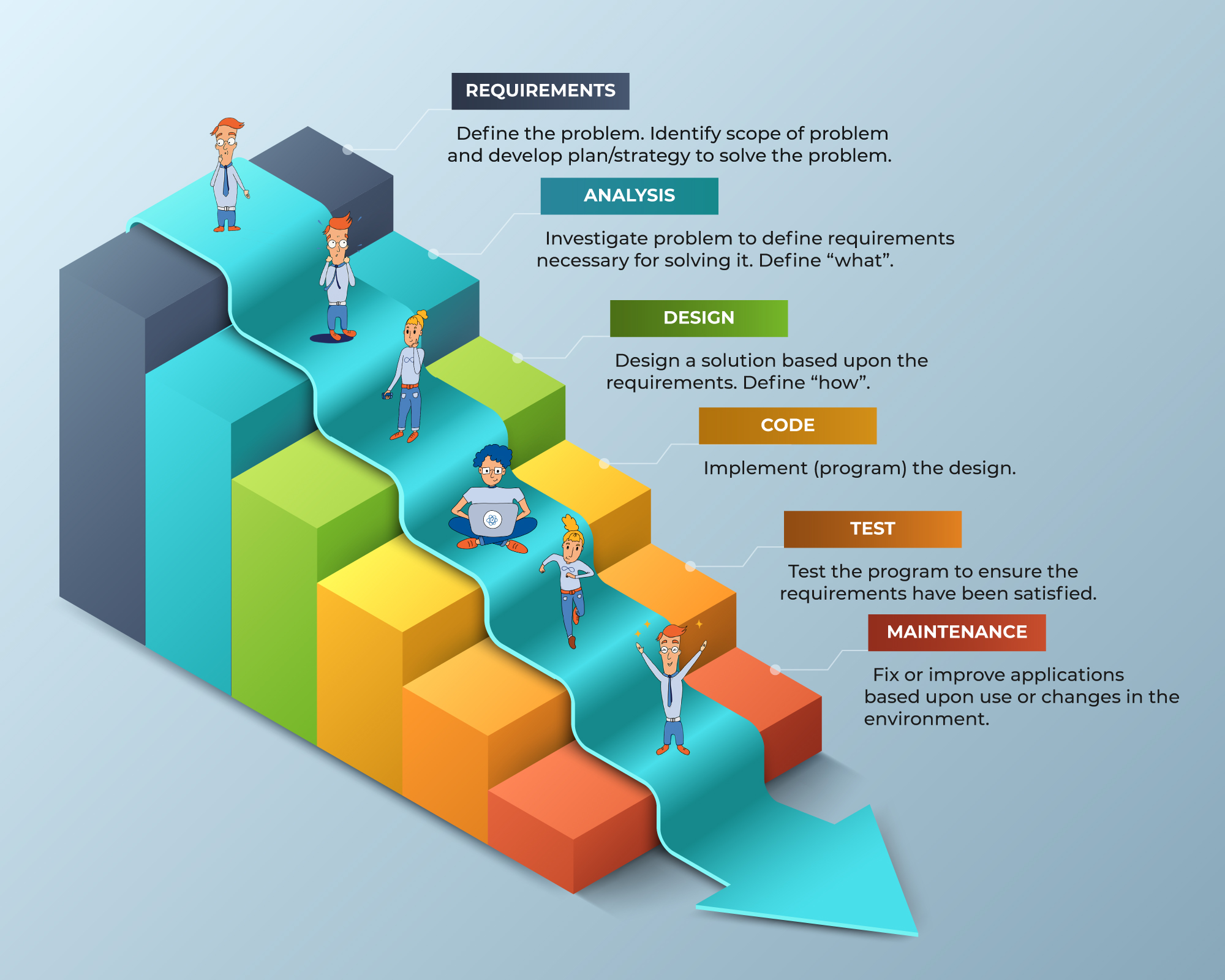In the fast-paced digital world, Agile methodology is a dynamic approach to project management that prioritizes flexibility, collaboration, and continuous improvement. While Agile methodologies promote customer satisfaction through iterative development, they also come with challenges that must be addressed for project success.
This article sheds light on the challenges faced in Agile, especially from the perspective of the Product Owner—a key team member responsible for bridging the gap between customer needs and the development team. From strategic decision-making to managing the backlog, Product Owners encounter unique hurdles in Agile methodology and environments.
To overcome these challenges, Product Owners should actively manage the product team, understand technical requirements, and secure buy-in from stakeholders. Emphasizing effective communication and embracing a continuous improvement approach allows Agile project management to thrive and deliver exceptional digital products that exceed customer expectations.

State of Agile
Flexible project management methodologies, such as Agile, encompass an array of approaches like Scrum, Kanban, Lean, Extreme Programming, and others. Each methodology comes with its own unique practices and principles, tailor-made to cater to diverse project necessities. Organizations can opt for the most appropriate methodology depending on their specific requirements and team dynamics.
The benefits of Agile project management are diverse, contributing to their widespread adoption among organizations. Accelerated delivery times, heightened customer satisfaction, increased collaboration, and adaptability to changing demands are some of the prominent advantages of Agile methodologies. Agile projects also excel in delivering early and frequent value to customers, resulting in faster return on investment.
In contrast to traditional project management, which relies on fixed plans and incurs high costs for changes, Agile embraces change and welcomes feedback, allowing teams to adjust and optimize as they progress. Agile’s iterative approach fosters continuous improvement, ensuring the project aligns with the evolving needs of customers and the business.

Agile Methodology; Failures, Challenges, and Issues
Challenges in Agile methodology may arise when they fall short of meeting customer expectations, encounter scope creep, or struggle to deliver value within given constraints. It is crucial to acknowledge that failure is a natural aspect of the learning process in Agile methodology, and the emphasis should be on deriving valuable insights from mistakes and using them to iterate toward eventual success.
Challenges and Problems Faced in Agile
Communication Problems: Inadequate communication among team members can lead to misunderstandings and hinder project progress. Effective communication tools, regular stand-ups, and transparent information sharing are vital to overcome this challenge.
Company Culture and Mindset: Organizational culture that resists change and lacks an Agile mindset can impede successful Agile adoption. Building a culture of continuous improvement, trust, and collaboration is crucial to foster Agile success.
Organization Change and Management Buy-In: A lack of support from senior management can hinder the successful implementation of Agile methodology and practices. Educating and aligning the management team with Agile principles and benefits is essential to gain their buy-in.
Day-to-Day Operational Problems: Challenges can arise in daily activities, such as backlog management, sprint planning, and prioritization. Clear processes, well-defined roles, and cross-functional collaboration can help address operational challenges.

Reasons for Agile Project Failure Based on VersionOne Survey
A survey conducted by VersionOne revealed that the top reasons for Agile project failure include lack of experience, inadequate training, and resistance to change. Investing in training, hiring experienced Agile practitioners, and embracing a culture of learning can help mitigate these risks.
Understanding the Role of a Product Owner
The Product Owner represents the customer’s voice, defining and prioritizing product features. They work closely with stakeholders and the development team to meet customer needs and project objectives.
Just like a tailor shapes a garment, the Product Owner guides the product vision and ensures it meets customer expectations perfectly.
While Product Owners, Product Managers, and Project Managers have distinct roles, the Product Owner translates the product vision into actionable tasks for the development team, delivering value to customers.
Product Owner Challenges
Not Being Solely Focused on Product Ownership
The Role of Managing the Product Team: Product Owners must balance their strategic duties with managing the product team efficiently. This involves providing guidance, resolving conflicts, and fostering a collaborative team culture.
Capturing User Needs and Translating Them into Actionable Development Output: Understanding customer needs and translating them into actionable user stories can be challenging. Product Owners need to conduct thorough user research, engage with customers, and collaborate with the development team to deliver features that align with customer needs.

Lack of Technical Aptitude
Importance of Understanding User Needs and Technical Requirements: A deep understanding of both customer needs and technical requirements is essential for effective product ownership. Product Owners should collaborate closely with the development team, participate in technical discussions, and be able to make informed decisions.
Potential Friction with the Development Team Due to Limited Technical Knowledge: Lack of technical expertise can lead to misunderstandings and friction with the development team. Product Owners can bridge this gap by investing in technical training and building a strong rapport with the development team.
Securing Buy-In
Dealing with Stakeholders and Senior Management Expectations: Product Owners must navigate stakeholder expectations and secure buy-in from senior management. This involves effective communication, providing evidence-based justifications, and aligning project outcomes with organizational goals.
Setting Expectations Early and Involving Stakeholders in Sprint Reviews: Early involvement of stakeholders in sprint reviews fosters a collaborative environment and ensures that the product meets their expectations.
Interpreting User Feedback
Translating User Needs and Feedback into Feature Iterations: Effectively translating user feedback into actionable improvements can be a complex task. Product Owners should use techniques like user research, feedback surveys, and user interviews to gain insights into user preferences and pain points.
Writing Tests and Conducting User Research to Drive Product Actions: Conducting user research and implementing tests are vital for data-driven product decisions. Product Owners can work closely with the development team and UX designers to create effective testing strategies.
Leading Agile Development & Task Ordering
The Tactical Role of a Product Owner in Guiding the Development Team: Product Owners must provide clear direction to the development team, ensuring efficient task execution. Prioritizing user stories based on customer value and business goals helps guide the development process effectively.
Defining Priorities Based on User Stories and Minimizing Lesser Requests: Prioritizing user stories and minimizing low-value requests can be challenging. Product Owners can use techniques like MoSCoW prioritization and impact mapping to make informed decisions.
Managing the Backlog
Ensuring Visibility Across All Teams and Managing the Backlog Effectively: Maintaining a well-organized backlog and ensuring visibility across teams is crucial. Product Owners can use tools like backlog boards and regular backlog grooming sessions to keep the backlog organized and up-to-date.
The Impact of a Full and Poorly Organized Backlog on Developers’ Focus: A cluttered backlog can lead to confusion and hinder developers’ focus. By continuously refining the backlog and keeping it manageable, Product Owners can ensure that the development team stays focused on delivering value.
Agile Solutions: Avoiding Failure and Overcoming Challenges
Selecting and Customizing the Right Methodology
Importance of Selecting the Suitable Agile Methodology: Choosing the right methodology is vital for project success. Organizations should consider their project scope, team structure, and customer requirements when selecting the most suitable Agile methodology.
Customizing the Methodology for the Organization and Project: Tailoring the methodology to fit the organization’s needs optimizes efficiency. Customizations may include adapting certain Agile practices, integrating existing workflows, and aligning the methodology with organizational goals.
Using a Traditional Methodology with Agile Practices
Blending traditional project management with Agile practices can be beneficial in certain scenarios. Organizations with established project management processes can integrate Agile practices like iterative development and regular feedback loops to improve project outcomes.
Adopting Hybrid Agile Approaches
Hybrid Agile approaches can be useful when dealing with complex projects that require a mix of methodologies. For example, a project may use Scrum for Agile software development and Kanban for ongoing maintenance and support.
Importance of Hiring Dedicated Product Owners in Agile Environments
Dedicated Product Owners enhance project focus and ensure alignment with customer needs. Organizations should invest in training or hire experienced Product Owners who can take ownership of the product and guide its development effectively.
Collaboration Between Product Owners and Development Teams
Effective collaboration between Product Owners and development teams fosters a shared vision and accelerates product delivery. Open and transparent communication, regular stand-ups, and joint decision-making are key to successful collaboration.
Leveraging Software Consultancy to Bridge the Gap in Development Processes
Engaging software consultancy services can fill skill gaps and provide valuable insights during Agile project development. Software consultancies often have experience in Agile practices and can offer guidance and support to improve project outcomes.
Problem-Solving Techniques for Agile Projects
Addressing challenges promptly is essential to prevent project derailment. Agile teams should adopt a proactive approach to problem-solving and foster a culture where team members feel empowered to raise and address issues.

Techniques for Problem-Solving in Agile Projects
Boundary Authority Role Task (BART) Analysis: BART analysis helps identify bottlenecks and potential solutions. This technique involves analyzing the roles and responsibilities of team members to ensure effective collaboration and decision-making.
Pain Snake Technique for Tracking Issues: The Pain Snake technique is a visual approach to tracking and addressing Agile project management issues. This technique involves identifying pain points, visualizing them on a timeline, and prioritizing solutions based on their impact.
The Significance of Timely Feedback and Adjustment in Agile
Regular feedback and timely adjustments ensure continuous improvement in Agile. Agile teams should embrace feedback from customers, stakeholders, and team members to identify areas for improvement and make adjustments to the product or development process.
Educate and Align with the Management Team
Gaining support from senior management is vital for successful Agile implementation. Agile champions within the organization can educate management about the benefits of Agile, address any concerns, and showcase successful Agile implementation.
Aligning the organization’s culture with Agile principles enhances collaboration and communication. This involves promoting a culture of trust, transparency, and continuous improvement, which are essential values in Agile transformation.
Key topics to address during management alignment include budgeting, resource allocation, and change management. By addressing these topics proactively, organizations can ensure that Agile practices align with overall business objectives.
Add Experience
Importance of Experienced Team Members in Agile
Experienced team members bring valuable insights and enhance project outcomes. Organizations should consider hiring or promoting team members with prior Agile experience to help guide the team and make informed decisions.
Strategies for Gaining Agile Experience
Sharing Internal Experienced Team Members: Knowledge sharing within the organization strengthens the team. Experienced team members can mentor others, conduct training sessions, and share best practices.
Hiring External Consultants: Engaging external consultants can bring diverse expertise to the project. Consultants with extensive Agile experience can provide valuable insights and help address specific challenges.
Roles Where Experience Is Most Appreciated (Agile Coach, Product Owner, Agile Testing)
Experienced individuals in roles such as Agile Coach, Product Owner, and Agile Testing contribute significantly to project success. These roles require a deep understanding of Agile principles and practices to guide the team effectively.

Conduct Training
Training is essential in Agile methodologies to enhance team skills and ensure consistent Agile practices. Investing in training equips team members with the knowledge and tools to implement Agile principles effectively.
For Agile project members, identifying suitable training is crucial to empower them with the needed skills and knowledge. Highly recommended courses include certifications like Certified ScrumMaster (CSM) and Certified Product Owner (CSPO) for Agile roles.
Product Owner training is particularly important in Agile projects, providing essential skills for effective product development management. This training covers areas such as product vision, backlog management, stakeholder engagement, and agile leadership, critical for Agile project success.
Run a Pilot
Running a pilot project in Agile is part of the Agile testing process, which allows organizations to test practices on a smaller scale, learn, and gather feedback before scaling across the organization. An ideal pilot should be feasible, representative, and aligned with goals, with a clear scope and measurable success criteria. A successful pilot builds confidence and support, encouraging broader Agile adoption.
Use Innovation Games
In Agile projects, participatory design is vital for fostering innovation and customer-centric product development. By involving customers and stakeholders directly in the design process, the Agile team gains valuable insights, creating products that align with user needs and preferences.
Innovation Games is an effective approach to participatory design, promoting active engagement and creative problem-solving among stakeholders. Interactive activities like these enable teams to collect feedback, prioritize features, and generate new ideas collaboratively and engagingly.

Engaging customers and users through interactive workshops and games enhance product outcomes. Techniques like “Buy a Feature” and “Remember the Future” empower participants to envision future product features and prioritize them based on their preferences.
Manage the Budget with Functional Contingency
Agile projects require flexible change control and functional contingency to manage evolving priorities and budgets effectively. Functional contingency involves allocating a buffer in the budget to handle unexpected changes or urgent requirements. Clear change business rules guide budget allocation based on evolving project needs, ensuring optimal resource usage and successful outcomes.
Conclusion
Agile projects may encounter challenges that can be effectively addressed with appropriate strategies. Highlighting the significance of Agile principles, effective communication, and continuous improvement is essential for project success.
Taking proactive measures to tackle Agile challenges ensures not just project success but also customer contentment. Agile teams should nurture a culture of problem-solving and actively seek solutions to potential obstacles in the project lifecycle. Tapping into the expertise of experienced team members proves instrumental in optimizing project outcomes.
In conclusion, Agile projects thrive on a proactive and adaptable approach to confront challenges and attain success. Implementing strategic actions and embracing continuous improvement empowers Agile teams to navigate hurdles, maximize performance, and achieve exceptional results.
FAQs
What are the challenges you faced as a product owner?
As a product owner, challenges may include prioritizing features, managing stakeholder expectations, and adapting to changing requirements while maintaining a clear product vision.
How do you handle production issues in Agile?
In Agile, production issues are handled through a collaborative approach. The team quickly identifies and addresses the issue, focusing on delivering a working solution to customers. They conduct root cause analysis, discuss potential fixes, and implement continuous improvement to prevent future occurrences.
How do you deal with a controlling product owner?
Dealing with a controlling product owner requires open communication and building trust. Encourage collaboration and share the benefits of empowering the team. Show the value of allowing the team to make decisions based on their expertise while keeping them informed of progress.



